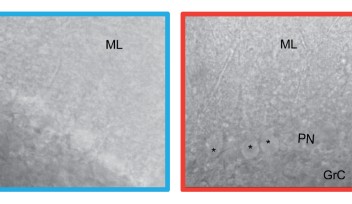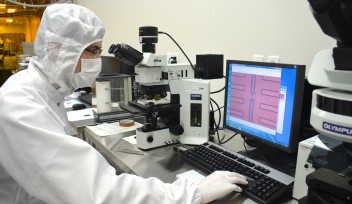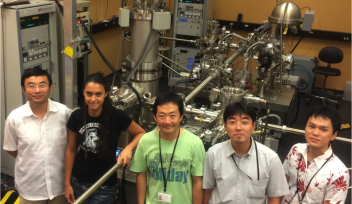An artistic representation of the formation of an exciton

When light is shone on a semiconducting material, the particles of light interact with the material’s electrons (shown here in blue). This causes the electrons to jump to a higher energy level. Each electron leaves behind a hole at the lower energy level. The two are oppositely charged so they revolve around each other, forming the short-lived exciton.
When light is shone on a semiconducting material, the particles of light interact with the material’s electrons (shown here in blue). This causes the electrons to jump to a higher energy level. Each electron leaves behind a hole at the lower energy level. The two are oppositely charged so they revolve around each other, forming the short-lived exciton. This image appeared in the press release “Scientists capture the fleeting dance of moiré excitons”.
Copyright OIST (Okinawa Institute of Science and Technology Graduate University, 沖縄科学技術大学院大学). Creative Commons Attribution 4.0 International License (CC BY 4.0).
Tags














